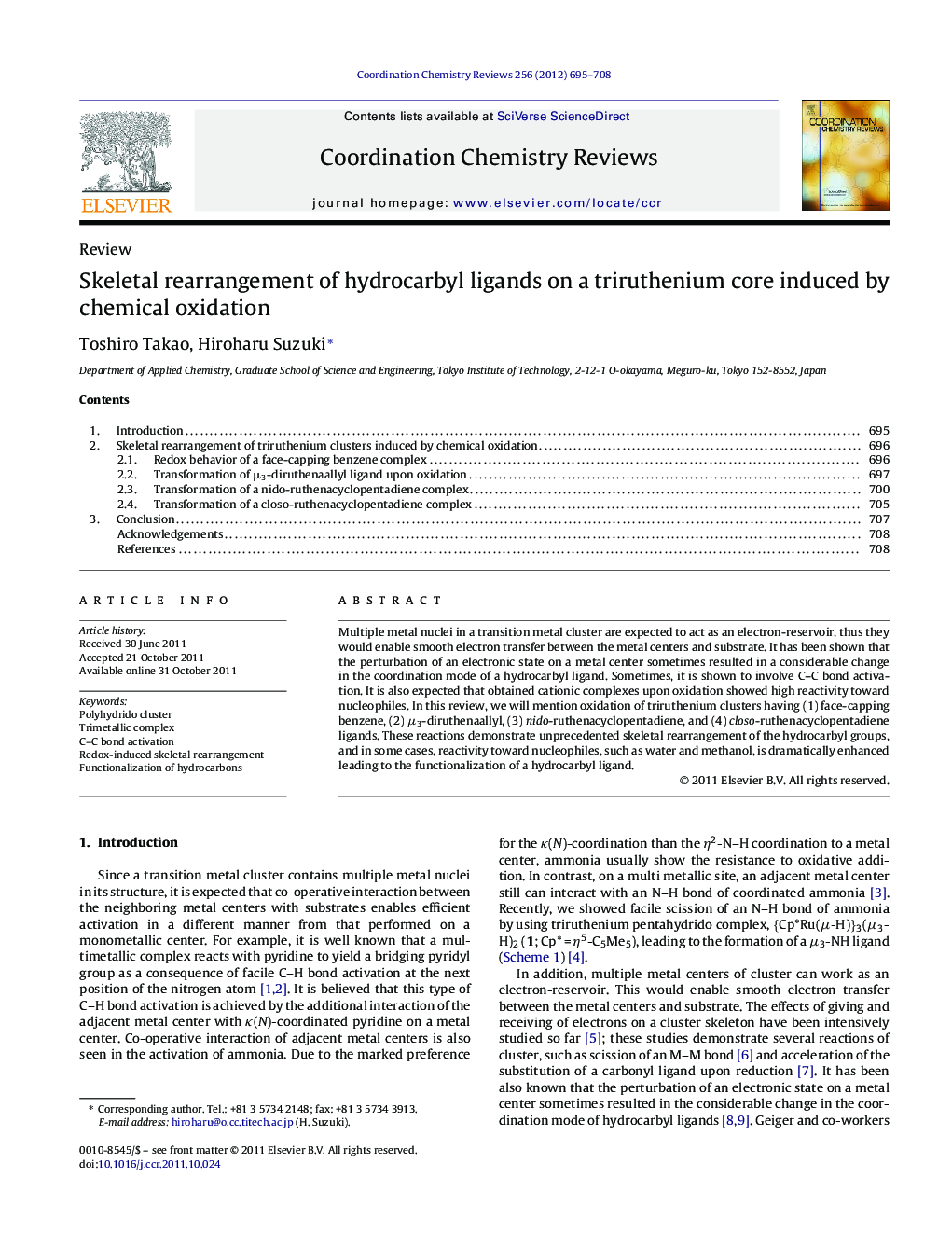| Article ID | Journal | Published Year | Pages | File Type |
|---|---|---|---|---|
| 1299765 | Coordination Chemistry Reviews | 2012 | 14 Pages |
Multiple metal nuclei in a transition metal cluster are expected to act as an electron-reservoir, thus they would enable smooth electron transfer between the metal centers and substrate. It has been shown that the perturbation of an electronic state on a metal center sometimes resulted in a considerable change in the coordination mode of a hydrocarbyl ligand. Sometimes, it is shown to involve C–C bond activation. It is also expected that obtained cationic complexes upon oxidation showed high reactivity toward nucleophiles. In this review, we will mention oxidation of triruthenium clusters having (1) face-capping benzene, (2) μ3-diruthenaallyl, (3) nido-ruthenacyclopentadiene, and (4) closo-ruthenacyclopentadiene ligands. These reactions demonstrate unprecedented skeletal rearrangement of the hydrocarbyl groups, and in some cases, reactivity toward nucleophiles, such as water and methanol, is dramatically enhanced leading to the functionalization of a hydrocarbyl ligand.
► Multiple metal nuclei in a cluster are expected to act as an electron-reservoir to operate smooth electron transfer with substrate. ► Redox of a cluster sometimes resulted in a considerable change in the coordination mode of a hydrocarbyl ligand. ► Redox-induced skeletal rearrangements of benzene, dimetalloallyl, and metallacyclopentadiene ligands placed on a triruthenium plane were studied. ► These reactions demonstrate facile C–C bond formation and scission on a trimetallic plane as well as dramatic enhancement of the reactivity toward nucleophiles.
